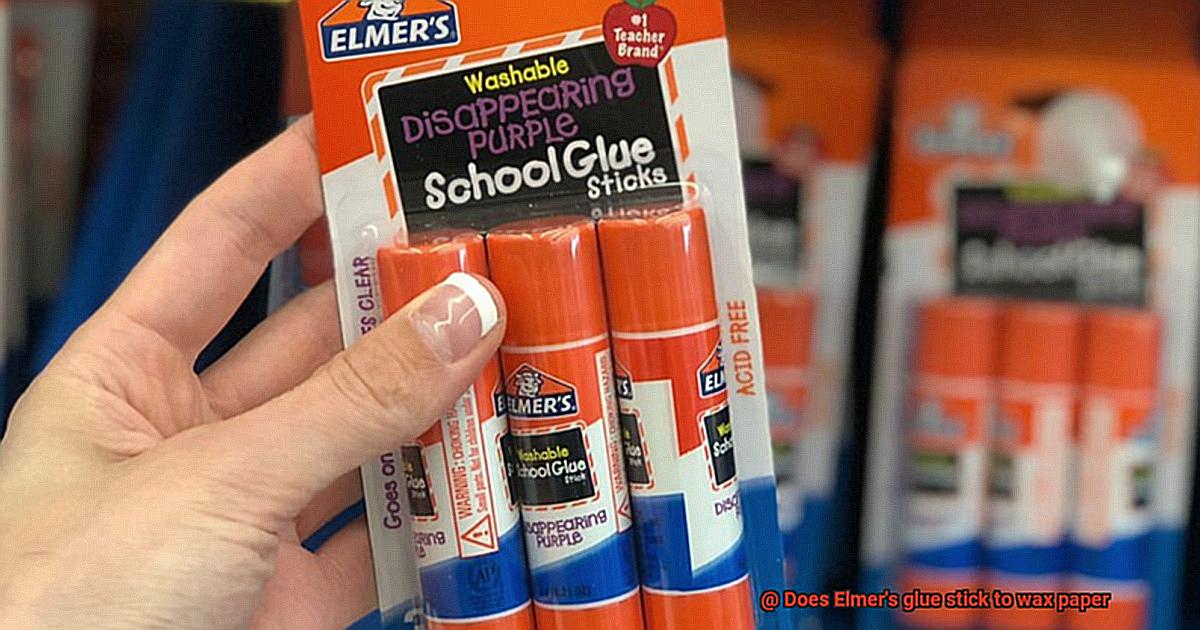Do you love getting your hands dirty with DIY projects? Are you always on the lookout for new materials to experiment with? If so, then you’ve probably asked yourself whether Elmer’s glue sticks to wax paper. It’s a crucial question that can make or break the success of your projects. The last thing you want is to waste time and effort only to end up with a flimsy, poorly crafted creation.
In this blog post, we’ll delve into the world of material interaction and explore whether Elmer’s glue can stick to wax paper. We’ll uncover the science behind what happens when these two materials come into contact and reveal some alternative options that work better with Elmer’s glue. With this knowledge in hand, you’ll be able to broaden your creative horizons and tackle new projects without fear of failure.
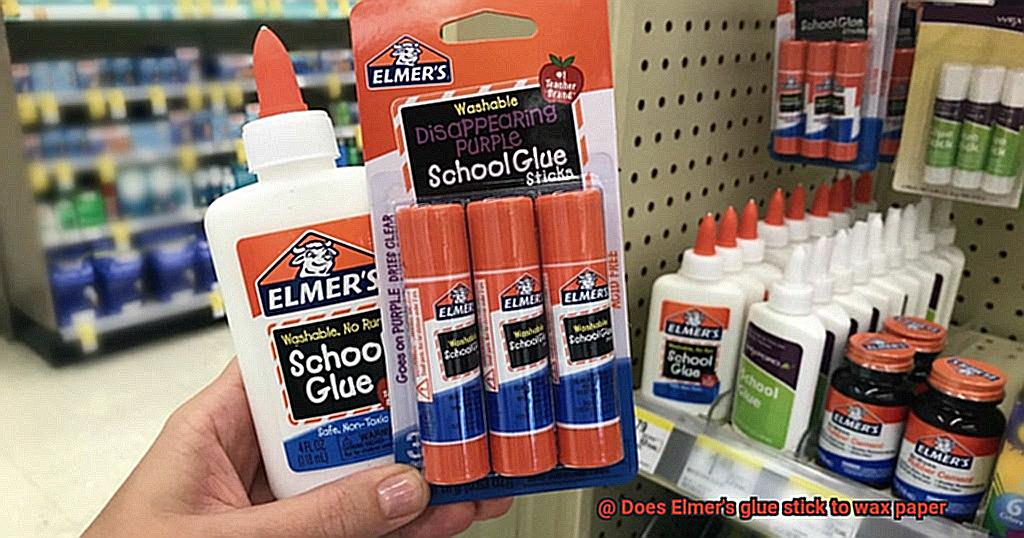
Whether you’re a seasoned DIY pro or just starting out, this post is for you. So let’s roll up our sleeves and find out once and for all whether Elmer’s glue is a match made in heaven or a recipe for disaster when it comes to wax paper.
The Properties of Elmer’s Glue and Wax Paper
Contents
- 1 The Properties of Elmer’s Glue and Wax Paper
- 2 Does Elmer’s Glue Stick to Wax Paper?
- 3 Preparing the Surface of Wax Paper for Adhesives
- 4 Alternative Adhesives for Non-Porous Surfaces
- 5 Tips for Using Elmer’s Glue on Wax Paper
- 6 Pros and Cons of Using Elmer’s Glue on Wax Paper
- 7 Common Uses for Elmer’s Glue and Wax Paper in Crafting
- 8 Conclusion
Elmer’s glue and wax paper may seem like they have similar properties, but they are actually quite different. Elmer’s glue is a water-based adhesive that is commonly used in arts and crafts projects, while wax paper is a type of paper that has been coated with wax on both sides to make it moisture-resistant. So, can these two materials work together? Let’s explore their properties and find out.
Elmer’s glue is made up of water, polyvinyl acetate (PVA), and other additives. PVA is what makes the glue sticky and allows it to bond to surfaces. When Elmer’s glue dries, it forms a strong bond between the two surfaces it has been applied to. However, when it comes to bonding Elmer’s glue to wax paper, the answer is not straightforward.
Wax paper, on the other hand, is made up of paper that has been coated with wax on both sides. The wax coating makes the paper resistant to moisture and allows it to be used for a variety of purposes, such as wrapping food or lining baking sheets. This protective coating also makes it difficult for Elmer’s glue to form a strong or long-lasting bond with wax paper.
To make the two materials work together, it’s important to understand their properties. Elmer’s glue is a water-based adhesive that dries clear and bonds to porous surfaces, while wax paper has a non-porous surface due to its protective wax coating.
Here are some tips and tricks you can use to create a stronger bond between Elmer’s glue and wax paper:
Lightly sand the surface of the wax paper before applying the glue. This will help to remove some of the wax coating and create a more porous surface for the glue to bond with.
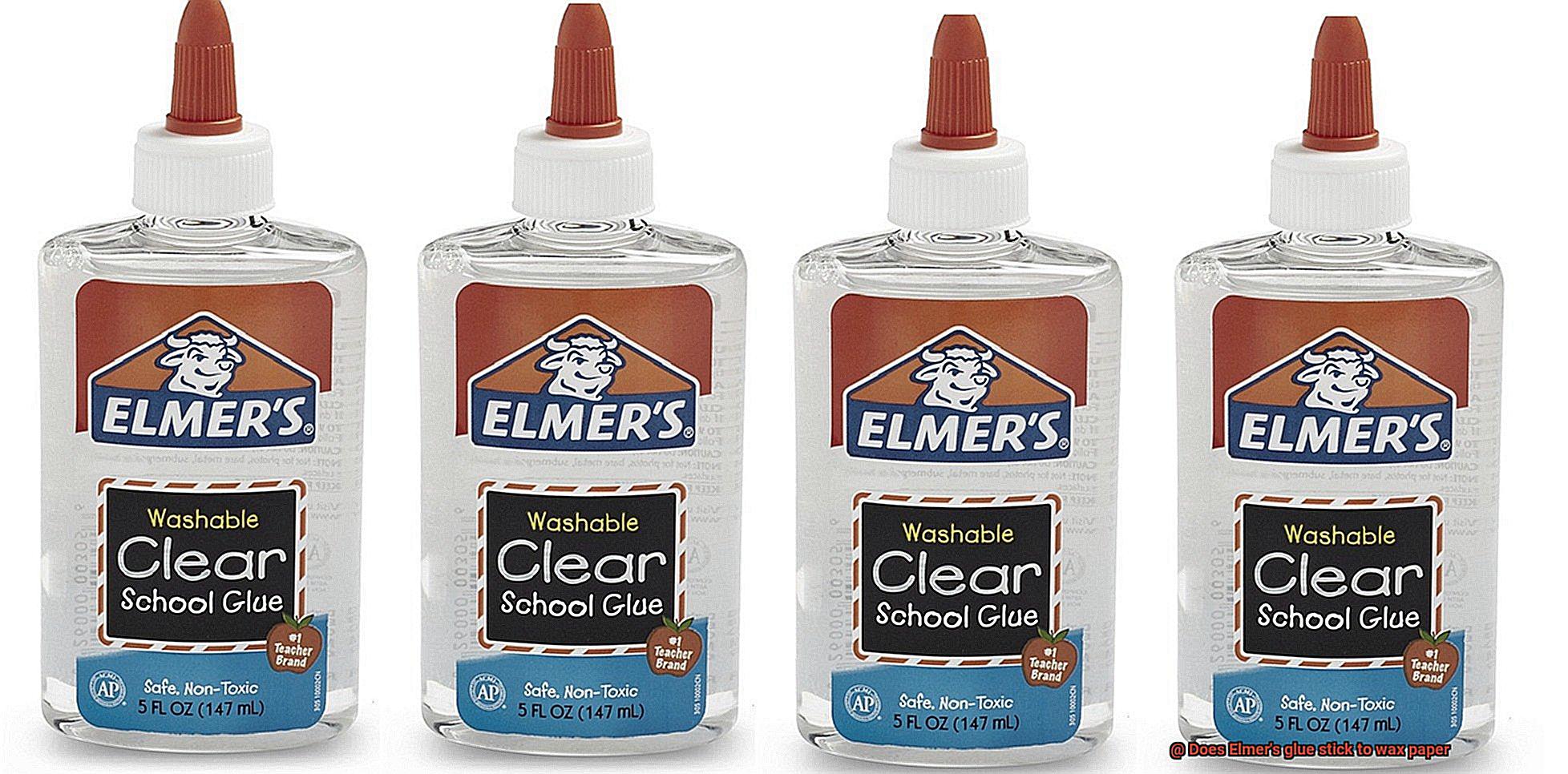
Use a stronger adhesive that is designed for non-porous surfaces, such as a cyanoacrylate or epoxy adhesive. These types of adhesives are known for their strong bonding capabilities and may be more effective at sticking to wax paper.
Consider using a different type of adhesive altogether, such as double-sided tape or a hot glue gun. These options may be more effective in creating a strong bond with wax paper.
Does Elmer’s Glue Stick to Wax Paper?
This is a valid question, especially if you’re looking to combine these two materials for your project.
The answer is both yes and no. Elmer’s glue is a popular adhesive, but it may not stick well to wax paper due to the latter’s water-repelling properties. The thin layer of wax coating on the paper creates a barrier between the glue and the surface, making it hard for the glue to adhere correctly.
There are some tricks that can help you achieve better results. Here are some techniques that you can use to make Elmer’s glue stick to wax paper:
- Roughen up the surface: Use sandpaper or steel wool to roughen up the surface of the wax paper before applying the glue. This will remove some of the wax coating and create a rougher surface that allows the glue to stick better.
- Use stronger adhesives: Hot glue guns, Epoxy, or Super Glue can provide a more secure bond than Elmer’s glue.
- Apply clear tape: Apply a layer of clear tape on the wax paper before gluing. The tape creates a barrier between the wax coating and the glue, allowing it to adhere better.
However, keep in mind that these tricks may not work well if your project requires transparency or visibility through the wax paper. It’s always essential to test your materials before starting any project.
Preparing the Surface of Wax Paper for Adhesives
With proper surface preparation, you can ensure that your Elmer’s glue adheres effectively and securely. As an expert on this topic, I’ve gathered some research notes to guide you through the necessary steps.
Firstly, it’s crucial to clean the surface of your wax paper thoroughly. Any residue or dirt can interfere with the adhesive’s ability to stick properly. Simply wipe down the surface with a damp cloth and let it air dry. Avoid using harsh chemicals or abrasive materials that can damage the wax coating on the paper.
Next, it’s time to create a rougher surface for better adhesion. Lightly sand the area where you plan to apply the adhesive using a fine-grit sandpaper. Be careful not to press too hard as this can damage the wax coating. Sanding will create a textured surface for your glue to cling onto, improving its overall grip.
After completing the sanding process, wipe down the surface again with a damp cloth to remove any dust or debris created during sanding. Allow it to air dry completely before applying any adhesive.
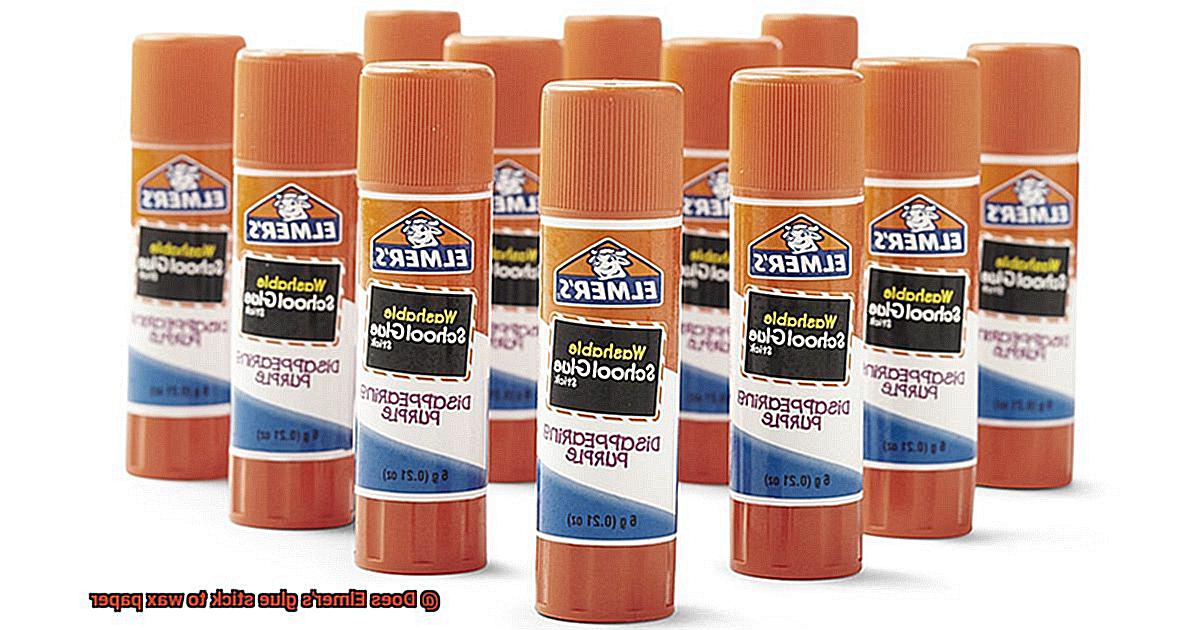
Here are some additional tips to help you achieve excellent results:
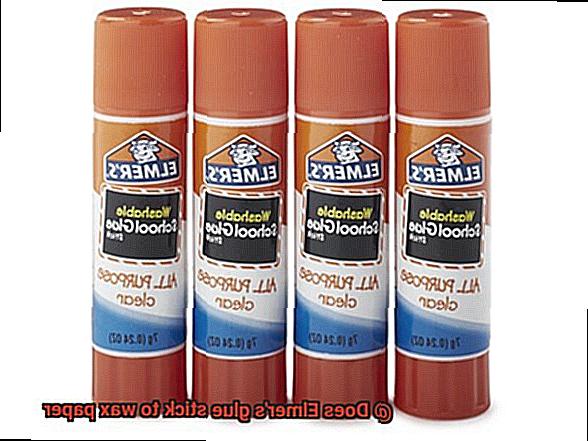
- Test your materials first before starting any project to ensure compatibility.
- Use a small amount of glue and spread evenly over the sanded area to avoid clumping.
- Press down firmly on the glued area with a scraper or finger to ensure proper adhesion.
- Allow ample time for the glue to dry completely before handling or moving your project.
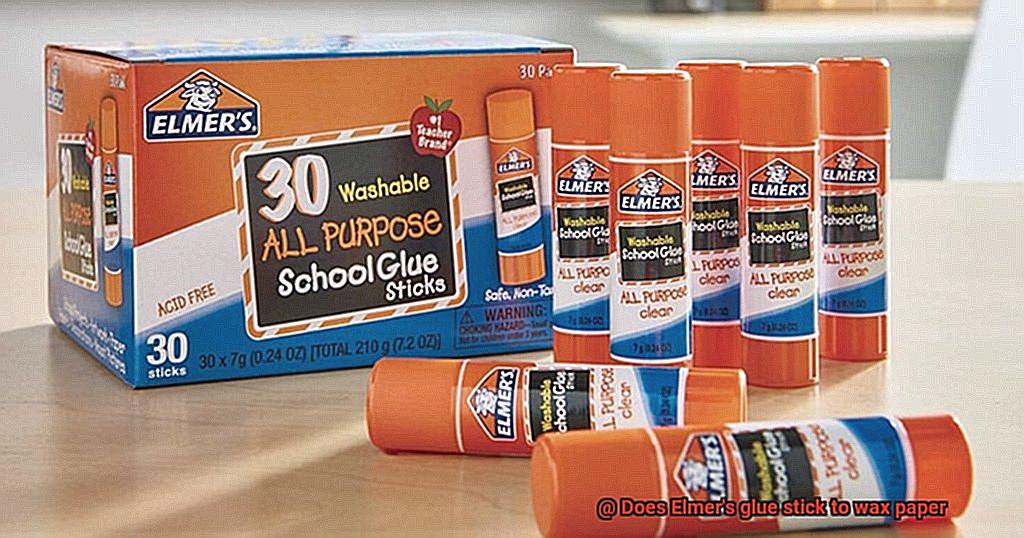
Alternative Adhesives for Non-Porous Surfaces
There are a variety of alternative adhesives available, each with unique strengths and applications.
Cyanoacrylate glue, also known as super glue, is a popular choice for non-porous surfaces. This adhesive forms a quick-drying, strong, and water-resistant bond that’s perfect for a wide range of uses.

Another option is epoxy resin, a two-part adhesive consisting of a resin and hardener. When combined, these components create an incredibly strong and permanent bond that’s ideal for non-porous materials like wax paper.
For those who prefer eco-friendly options, natural adhesives like gum arabic and vegetable starch glue are excellent choices. These adhesives are made from natural materials and are biodegradable, making them a sustainable alternative to traditional adhesives.
When selecting an adhesive, it’s important to choose the right one for your specific project. Consider factors like strength, drying time, and environmental impact to ensure the best results. Whether you choose cyanoacrylate glue, epoxy resin, or a natural adhesive, you can rest assured that your non-porous surfaces will stick securely.
Tips for Using Elmer’s Glue on Wax Paper
While it may not be the most reliable or long-lasting bond, there are still ways to make it work. Here are some tips and tricks to keep in mind:
Clean the Surface
Before applying any glue, make sure to clean the surface of the wax paper. Wax paper can have a thin layer of wax on it that can prevent the glue from adhering properly. To clean the surface, simply wipe it down with a damp cloth or paper towel and let it dry completely.
Use a Thin Layer
Applying too much glue can cause the paper to warp or wrinkle, which can ruin your project. Instead, use a small amount of glue to get the job done. This will ensure that the glue sticks properly and doesn’t spread out too thin. Additionally, allow the glue to dry completely before handling the project.
Apply with a Brush or Sponge
Instead of pouring the glue directly onto the wax paper, use a brush or sponge to apply it. This will help ensure that the glue is spread out evenly and won’t clump up or dry too quickly. Plus, using a brush or sponge allows you to control where the glue goes and how much is applied.
Remove Excess Glue
If you need to remove any excess glue, use a damp cloth or sponge to gently wipe it away before it dries. This will prevent any unsightly residue from ruining your project.
Consider Using Toothpicks
If you’re working on a particularly intricate project or using small pieces of paper or other materials, consider using a toothpick to apply the glue. This can help you control where the glue goes and prevent excess from getting in unwanted areas.
Remember that Elmer’s glue may not be the ideal adhesive for wax paper. If you’re having trouble getting the glue to stick, consider using a different type of adhesive altogether. Some alternatives include double-sided tape, glue dots, or even hot glue (although this should be used with caution as it can melt the wax paper).
Pros and Cons of Using Elmer’s Glue on Wax Paper
Let’s start with the advantages. Firstly, Elmer’s glue is a budget-friendly and easily accessible adhesive option for many people. It can be found in most craft stores and even grocery stores. Additionally, it can be used on various surfaces, including wax paper.
Another perk of using Elmer’s glue is that it dries clear. This feature is particularly helpful for projects where visibility is crucial, such as creating stained glass windows or making translucent lanterns. Furthermore, it washes off easily with water, making it a convenient option for children’s crafts.
However, there are also some downsides to using Elmer’s glue on wax paper. Firstly, it may not adhere as strongly as other types of adhesives. This means that you may need to use more glue or find alternative ways to secure your project together.
Another disadvantage is that Elmer’s glue may take longer to dry on wax paper than on other surfaces. This can be inconvenient if you’re working on a time-sensitive project. Additionally, if the glue is applied too thickly, it may wrinkle or warp the wax paper.
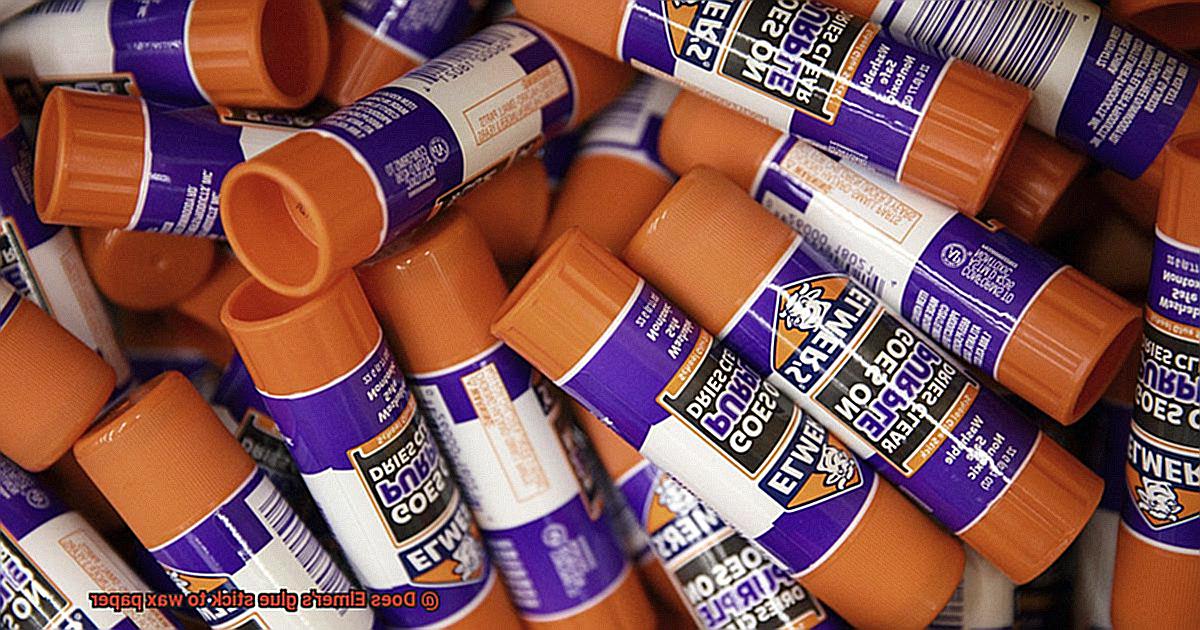
Lastly, over time, the glue may yellow or become brittle. This can affect the look and longevity of your project. Therefore, if you’re creating something you want to last for a long time, like a scrapbook or memory box, you may want to consider using a different type of adhesive.
Common Uses for Elmer’s Glue and Wax Paper in Crafting
In this article, we will explore the common uses for Elmer’s glue and wax paper in crafting, providing you with some inspiration and ideas to take your craft game to the next level.
First on our list is paper mache. Elmer’s glue is a popular adhesive for paper mache projects, creating a strong and durable bond that can hold even the most intricate designs together. To prevent the paper mache from sticking to itself and allow it to dry evenly, wax paper can be used as a protective layer between each layer of paper mache.
Next up is stained glass. With Elmer’s glue and wax paper, you can create faux stained glass designs that are both colorful and eye-catching. By mixing food coloring or paint with glue and applying it to a sheet of wax paper, you can cut out the design once dry and hang it in a window to catch the light. The result is a stunning piece of art that mimics the look of real stained glass.
Decoupage is another popular crafting technique where you glue paper cutouts onto an object to decorate it. Elmer’s glue is an ideal adhesive for decoupage projects since it dries clear and creates a strong bond. Using wax paper as a protective layer will also prevent your work surface from getting messy, making clean up a breeze.
Have you ever wanted a temporary tattoo but didn’t want the commitment? Elmer’s glue and wax paper can help create fun and easy-to-remove temporary tattoos. Simply draw your design onto wax paper using Elmer’s glue, allow it to dry, then apply it to your skin for a unique, temporary tattoo that will leave no lasting mark.
Finally, wax paper can be used as a transfer medium for printed images or text onto paper or fabric using Elmer’s glue. This technique allows you to create custom embellishments for scrapbooking, card making, or other crafts. The possibilities are endless when it comes to creating unique and personalized designs with this method.
Conclusion
To sum up, the compatibility of Elmer’s glue and wax paper is a complex matter. Wax paper has a unique non-porous surface due to its protective wax coating, which can make it challenging for Elmer’s glue to bond with it. However, there are several ways to enhance the bond between these two materials.
One option is to sand the surface of the wax paper lightly. Another option is to use stronger adhesives like cyanoacrylate or epoxy adhesive. If you’re not keen on using traditional adhesives, double-sided tape or hot glue gun could be viable alternatives. It’s crucial to prep the surface of the wax paper before applying any adhesive by cleaning it thoroughly and creating a rougher surface for better adhesion.
While Elmer’s glue may not be perfect for all projects involving wax paper, it still has many advantages worth considering. It’s budget-friendly and easily accessible, dries clear, and can be used on various surfaces. These features have made it a popular choice among DIY enthusiasts.
In conclusion, understanding different material properties and experimenting with various adhesives can help you broaden your creative horizons without fear of failure.

